High content phenotypic cell-based visual screen identifies Mycobacterium tuberculosis acyltrehalose-containing glycolipids involved in phagosome remodeling
- PMID: 20844580
- PMCID: PMC2936551
- DOI: 10.1371/journal.ppat.1001100
High content phenotypic cell-based visual screen identifies Mycobacterium tuberculosis acyltrehalose-containing glycolipids involved in phagosome remodeling
Abstract
The ability of the tubercle bacillus to arrest phagosome maturation is considered one major mechanism that allows its survival within host macrophages. To identify mycobacterial genes involved in this process, we developed a high throughput phenotypic cell-based assay enabling individual sub-cellular analysis of over 11,000 Mycobacterium tuberculosis mutants. This very stringent assay makes use of fluorescent staining for intracellular acidic compartments, and automated confocal microscopy to quantitatively determine the intracellular localization of M. tuberculosis. We characterised the ten mutants that traffic most frequently into acidified compartments early after phagocytosis, suggesting that they had lost their ability to arrest phagosomal maturation. Molecular analysis of these mutants revealed mainly disruptions in genes involved in cell envelope biogenesis (fadD28), the ESX-1 secretion system (espL/Rv3880), molybdopterin biosynthesis (moaC1 and moaD1), as well as in genes from a novel locus, Rv1503c-Rv1506c. Most interestingly, the mutants in Rv1503c and Rv1506c were perturbed in the biosynthesis of acyltrehalose-containing glycolipids. Our results suggest that such glycolipids indeed play a critical role in the early intracellular fate of the tubercle bacillus. The unbiased approach developed here can be easily adapted for functional genomics study of intracellular pathogens, together with focused discovery of new anti-microbials.
Conflict of interest statement
The authors have declared that no competing interests exist.
Figures
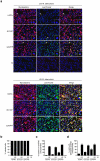

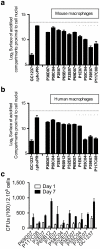
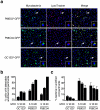
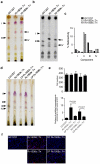
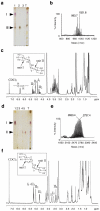
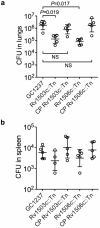
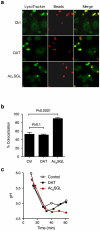
Similar articles
-
A genetic screen for Mycobacterium tuberculosis mutants defective for phagosome maturation arrest identifies components of the ESX-1 secretion system.Infect Immun. 2007 Jun;75(6):2668-78. doi: 10.1128/IAI.01872-06. Epub 2007 Mar 12. Infect Immun. 2007. PMID: 17353284 Free PMC article.
-
Isolation of Mycobacterium tuberculosis mutants defective in the arrest of phagosome maturation.Proc Natl Acad Sci U S A. 2004 Sep 14;101(37):13642-7. doi: 10.1073/pnas.0401657101. Epub 2004 Aug 31. Proc Natl Acad Sci U S A. 2004. PMID: 15340136 Free PMC article.
-
Rab14 is critical for maintenance of Mycobacterium tuberculosis phagosome maturation arrest.EMBO J. 2006 Nov 15;25(22):5250-9. doi: 10.1038/sj.emboj.7601407. Epub 2006 Nov 2. EMBO J. 2006. PMID: 17082769 Free PMC article.
-
[Molecular dissection of Mycobacterium tuberculosis-containing phagosomes].Nihon Saikingaku Zasshi. 2014;69(3):513-25. doi: 10.3412/jsb.69.513. Nihon Saikingaku Zasshi. 2014. PMID: 25186642 Review. Japanese.
-
[Mechanism of intracellular parasitism by Mycobacterium tuberculosis].Nihon Rinsho. 2011 Aug;69(8):1373-7. Nihon Rinsho. 2011. PMID: 21838032 Review. Japanese.
Cited by
-
High throughput phenotypic selection of Mycobacterium tuberculosis mutants with impaired resistance to reactive oxygen species identifies genes important for intracellular growth.PLoS One. 2013;8(1):e53486. doi: 10.1371/journal.pone.0053486. Epub 2013 Jan 8. PLoS One. 2013. PMID: 23320090 Free PMC article.
-
Systematic, multiparametric analysis of Mycobacterium tuberculosis intracellular infection offers insight into coordinated virulence.PLoS Pathog. 2017 May 15;13(5):e1006363. doi: 10.1371/journal.ppat.1006363. eCollection 2017 May. PLoS Pathog. 2017. PMID: 28505176 Free PMC article.
-
Diversion of phagosome trafficking by pathogenic Rhodococcus equi depends on mycolic acid chain length.Cell Microbiol. 2013 Mar;15(3):458-73. doi: 10.1111/cmi.12050. Epub 2012 Nov 13. Cell Microbiol. 2013. PMID: 23078612 Free PMC article.
-
Intracellular and in vivo evaluation of imidazo[2,1-b]thiazole-5-carboxamide anti-tuberculosis compounds.PLoS One. 2020 Jan 6;15(1):e0227224. doi: 10.1371/journal.pone.0227224. eCollection 2020. PLoS One. 2020. PMID: 31905374 Free PMC article.
-
A high-throughput whole cell screen to identify inhibitors of Mycobacterium tuberculosis.PLoS One. 2019 Jan 16;14(1):e0205479. doi: 10.1371/journal.pone.0205479. eCollection 2019. PLoS One. 2019. PMID: 30650074 Free PMC article.
References
-
- Russell DG. Mycobacterium tuberculosis: here today, and here tomorrow. Nat Rev Mol Cell Biol. 2001;2:569–577. - PubMed
-
- Vergne I, Chua J, Singh SB, Deretic V. Cell biology of mycobacterium tuberculosis phagosome. Annu Rev Cell Dev Biol. 2004;20:367–394. - PubMed
-
- Russell DG. Phagosomes, fatty acids and tuberculosis. Nat Cell Biol. 2003;5:776–778. - PubMed
-
- Hestvik AL, Hmama Z, Av-Gay Y. Mycobacterial manipulation of the host cell. FEMS Microbiol Rev. 2005;29:1041–1050. - PubMed
-
- Nguyen L, Pieters J. The Trojan horse: survival tactics of pathogenic mycobacteria in macrophages. Trends Cell Biol. 2005;15:269–276. - PubMed
Publication types
MeSH terms
Substances
LinkOut - more resources
Full Text Sources
Other Literature Sources
Medical
Molecular Biology Databases

